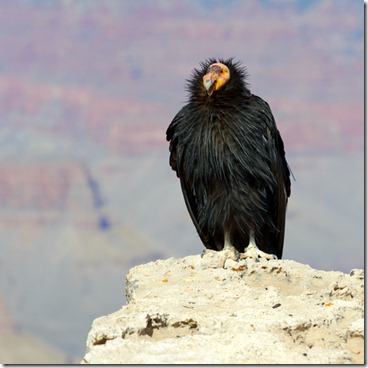GUESS THAT BIRD
The largest flying bird in North America, the California Condor is one of the most endangered birds in the world. Rarely flapping, except during takeoff and landing, it is a superb glider that covers enormous distances each day.
Measurements
· Length – 46.1–52.8 in
· Wingspan – 109.1 in
· Weight – 246.9–349.2 oz
Cool Facts
· The California Condor normally dominates other scavengers and usually does not hesitate to take a carcass away from smaller species. The exception is when a Golden Eagle is present. Although the condor weighs about twice as much as an eagle, the superior talons of the eagle command respect.
· The California Condor lays only one egg in a brood. The young is dependent upon the parents for more than one year, and consequently condor pairs usually breed only in every other year.
· Young condors do not breed until they are six to eight years old, about the time they acquire full adult coloration.
Habitat
Mountains
· Nesting habitats have ranged from scrubby chaparral to forested montane regions subject to winter snowfalls. Most foraging documented in relatively open grassland regions.
Food
· Carrion of large mammals.
Clutch Size
· 1 eggs
Egg Description
· Pale blue-green bleaching to white.
Condition at Hatching
· Helpless, covered in white down with eyes open.
Nest Description
· Pile of loose debris on cliff ledge.
Status
Severely endangered. All nine remaining wild condors were captured in 1987. A captive breeding program has been successful in producing young, and condors have been reintroduced into California and Arizona. Wild condors are breeding, but have not yet been successful in producing young surviving to breeding age. Details on the captive breeding and reintroduction project can be found at the Peregrine Fund web site and at the U.S. Fish and Wildlife Service web site
Source: http://www.allaboutbirds.org/guide/california_condor/lifehistory

 (916) 434-2759
(916) 434-2759



